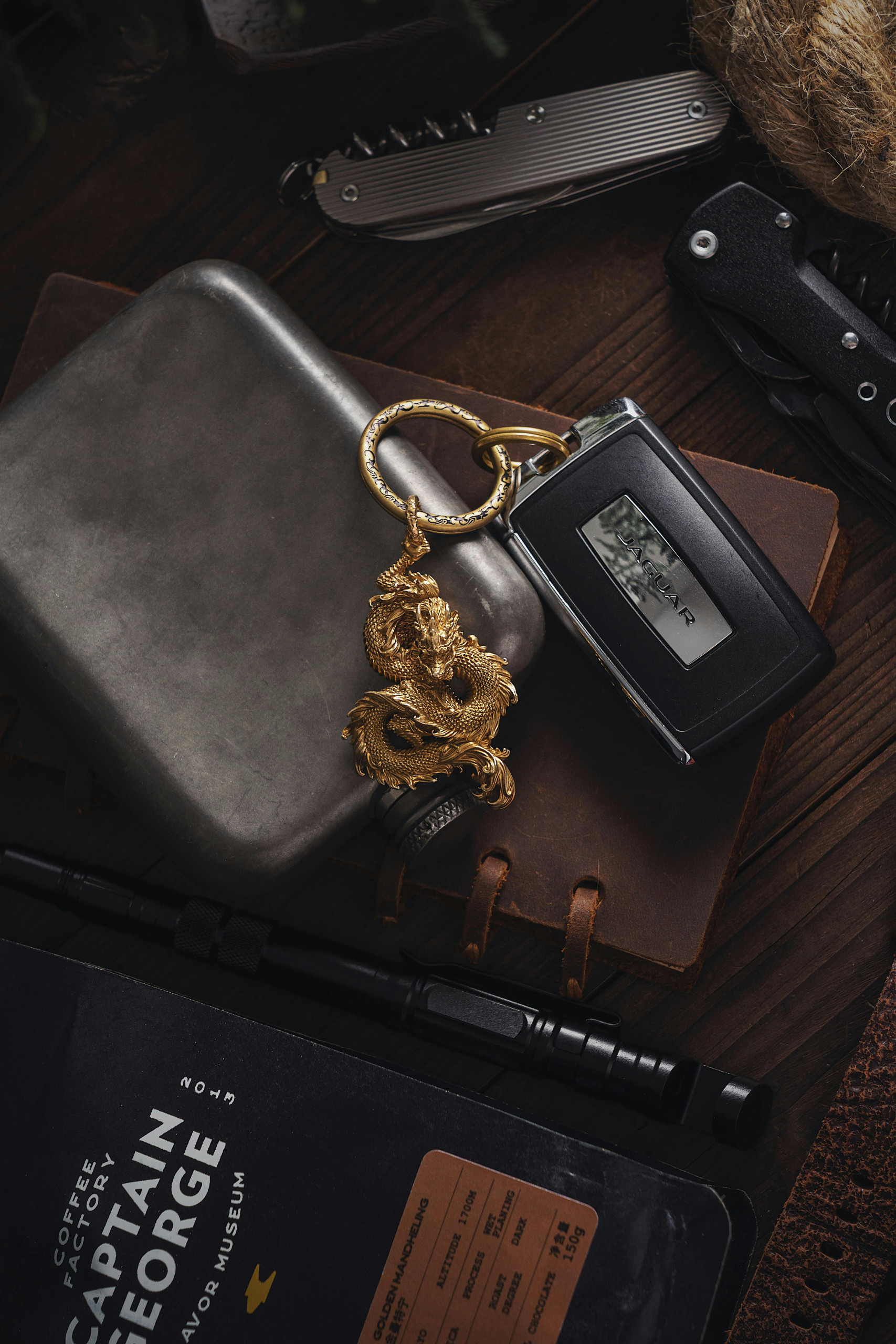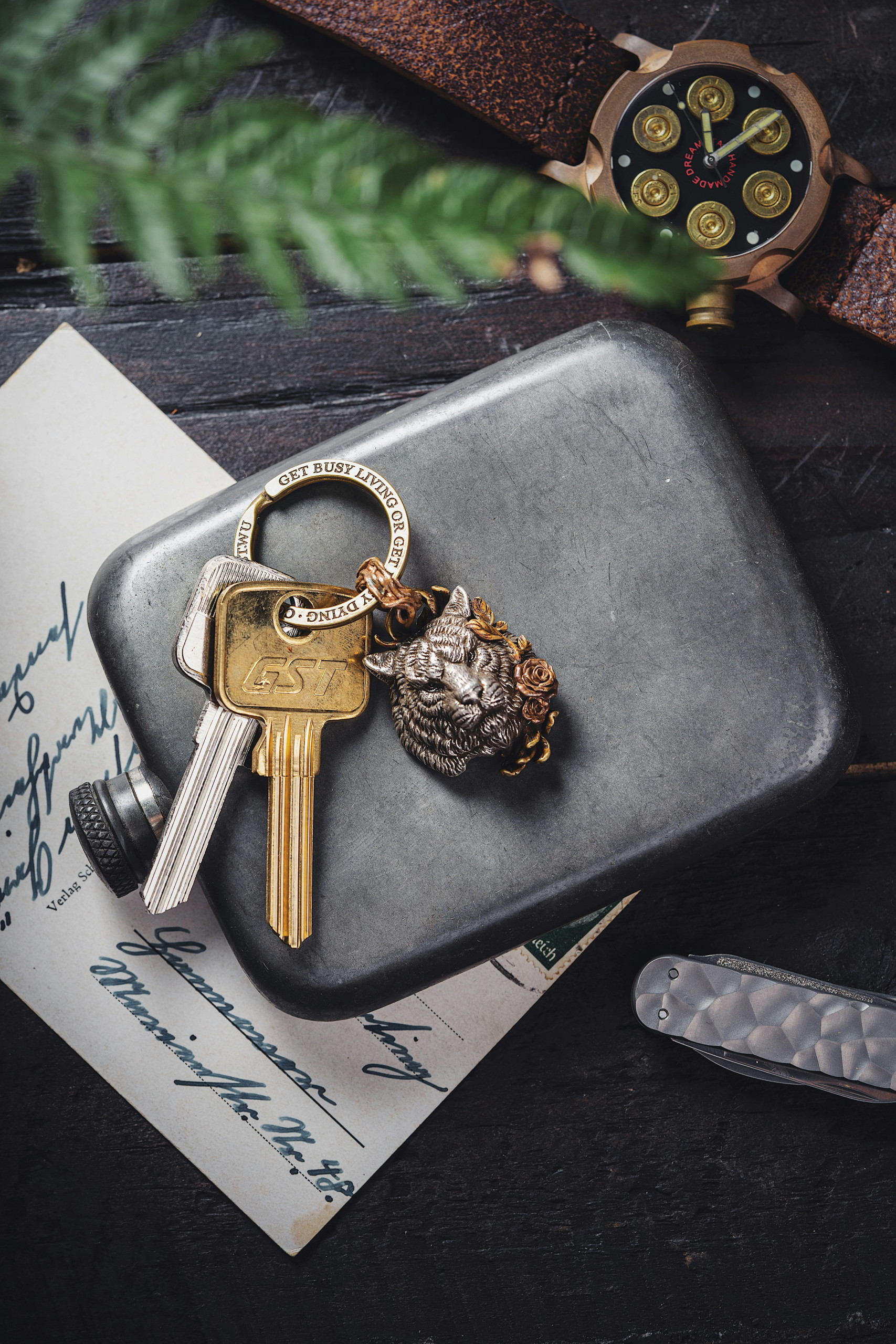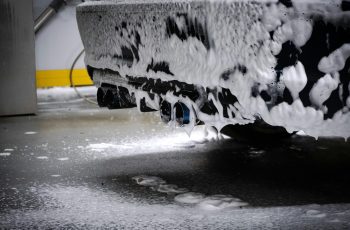If you’re searching for a versatile tool that can effortlessly create custom shapes and profiles, look no further than electric die grinders. With their powerful motors and compact design, these handy tools are perfect for shaping and sculpting various materials. Whether you’re a professional craftsman or a DIY enthusiast, electric die grinders offer endless possibilities for customization and creativity. In this article, we’ll explore the different applications and techniques for using these grinders to achieve stunning and unique shapes and profiles.
Introduction to Electric Die Grinders
Electric die grinders are versatile and powerful tools that are commonly used for shaping and profiling various materials such as metal, wood, and plastic. They are handheld devices that use electric power to rotate a grinding bit or an attachment at high speeds. These tools are preferred by professionals and DIY enthusiasts alike due to their compact size, ease of use, and ability to provide precise shaping and profiling results.
Benefits of using electric die grinders for shaping and profiling
There are several benefits to using electric die grinders for shaping and profiling tasks. Firstly, electric die grinders offer speed and efficiency, allowing you to quickly remove material and shape it according to your desired specifications. This saves both time and effort, making the process smoother and more enjoyable.
Additionally, electric die grinders provide excellent control and precision. Their compact size and ergonomic design allow for easy maneuverability, ensuring accurate shaping and profiling. This level of control is crucial, especially when working on intricate projects or delicate materials.
Furthermore, electric die grinders offer a wide range of grinding bits and attachments, allowing you to choose the most suitable ones for specific shapes and profiles. This versatility enables you to achieve a variety of custom designs and achieve professional results.

Choosing the Right Electric Die Grinder
When selecting an electric die grinder, there are several factors to consider. Firstly, you need to determine the power output that is suitable for your intended applications. Higher power output ensures better performance and allows you to tackle tougher materials effortlessly.
Next, consider the speed settings of the electric die grinder. Variable speed options are desirable as they provide more control and versatility. Different materials may require different speeds to achieve the desired shaping and profiling results.
Another important factor to consider is the size and weight of the electric die grinder. A compact and lightweight design will offer better maneuverability and minimize fatigue during longer shaping and profiling sessions.
Finally, it is essential to choose an electric die grinder from a reputable brand known for its quality and reliability. Doing thorough research and reading customer reviews can help you make an informed decision.
Different types and sizes of electric die grinders
Electric die grinders are available in various types and sizes to suit different applications. Straight electric die grinders feature a slim and elongated body, making them ideal for reaching tight spaces and intricate details. Angled electric die grinders, on the other hand, have a bent shaft, providing better access in certain areas.
Furthermore, electric die grinders come in different sizes based on their collet size, which refers to the diameter of the grinding bit or attachment that can be used. Common collet sizes include 1/4 inch, 3/8 inch, and 1/2 inch. Choosing the right collet size is important as it ensures compatibility with the grinding bits and attachments you intend to use.

Safety Precautions
When working with electric die grinders for shaping and profiling, it is crucial to prioritize safety and follow the necessary guidelines. Failure to do so can result in accidents and injuries. Here are some safety precautions to keep in mind:
-
Always wear appropriate protective gear, including safety glasses or goggles, a dust mask, and ear protection. This will protect you from flying debris, dust, and excessive noise.
-
Ensure the workpiece is securely clamped or held in place. This prevents it from moving or vibrating during the shaping and profiling process, reducing the risk of accidents.
-
Familiarize yourself with the features and controls of your electric die grinder before use. Read the user manual carefully and understand how to properly operate the tool.
-
Avoid wearing loose clothing or jewelry that may get caught in the rotating parts of the grinder. Tie back long hair and remove any accessories that could pose a hazard.
-
When using the electric die grinder, always maintain a firm grip and keep a stable stance. This helps you maintain control over the tool and decreases the chances of it slipping or causing accidents.
-
Regularly inspect the grinder and its accessories for any signs of damage or wear. Replace any worn-out or damaged parts before using the tool to ensure safe and efficient operation.
Adhering to these safety precautions will help you work confidently and minimize the risks associated with electric die grinders.
Preparing the Workpiece
Before you begin shaping and profiling with an electric die grinder, it is essential to prepare the workpiece appropriately. This involves cleaning and securing the workpiece, as well as marking the area to be shaped or profiled.
Start by cleaning the workpiece to remove any dirt, dust, or debris that could interfere with the shaping process. Use a cloth, brush, or compressed air to ensure the surface is clean and free from any contaminants.
Next, securely clamp or hold the workpiece in place. This prevents it from moving or shifting during the shaping and profiling process, ensuring safe and accurate results. Make sure the workpiece is stable and that it will not slip or break loose while you are working on it.
Lastly, mark the area on the workpiece that you intend to shape or profile. Use a pencil, marker, or scribe to create clear and visible lines or curves. These markings will guide you during the grinding process, ensuring precision and accuracy in achieving your desired shape or profile.

Selecting the Right Grinding Bits and Attachments
To achieve the desired shapes and profiles with your electric die grinder, it is important to choose the right grinding bits and attachments. Here is an overview of different types of grinding bits and attachments commonly used:
-
Grinding discs: These are flat, circular attachments that are ideal for rapid material removal and surface smoothing. They are available in various grits and can be used on a wide range of materials.
-
Carbide burrs: Carbide burrs are rotary cutting tools that are excellent for shaping and sculpting. They are durable and can efficiently remove material to create intricate designs.
-
Flap wheels: Flap wheels consist of overlapping abrasive flaps mounted on a spindle. They are suitable for blending, deburring, and creating a smooth finish on flat or contoured surfaces.
-
Sanding drums: Sanding drums are cylindrical attachments that are covered with sandpaper. They are commonly used for fine sanding and polishing intricate shapes and profiles.
-
Wire brushes: Wire brushes are ideal for removing rust, paint, and other surface coatings. They can be used to clean and prepare the workpiece before shaping or profiling.
When choosing grinding bits and attachments, consider the material you are working on, the desired shape or profile, and the level of surface finish you want to achieve. Consulting the manufacturer’s guidelines and experimenting with different options will help you find the most suitable grinding bits and attachments for your specific needs.
Techniques for Shaping and Profiling
With the right electric die grinder and grinding bits, you can employ various techniques to shape and profile your workpiece. Here are some basic grinding techniques for creating custom shapes:
-
Contouring: Move the electric die grinder in a back-and-forth or side-to-side motion to create curved or contoured shapes. Start with a coarse grinding bit and gradually switch to finer ones to achieve the desired smoothness.
-
Beveling: Tilt the electric die grinder at an angle to create beveled edges. Adjust the angle of the grinder to achieve different bevel widths and angles.
-
Rounding: Use a rounded grinding bit or attachment to create rounded and smooth edges. Move the grinder in a circular motion to gradually shape the workpiece.
For more specialized techniques, such as profiling and detailing, consider using smaller and more precise grinding bits or attachments. These techniques require patience, precision, and control, so take your time and practice to achieve the desired results.
Maintaining Control and Accuracy
To ensure proper control and accuracy when using an electric die grinder, it is important to follow some key techniques:
-
Maintain a proper grip: Hold the electric die grinder firmly, but not too tightly, with both hands. Use your dominant hand to operate the tool and your non-dominant hand to support and stabilize it.
-
Position your body correctly: Stand or sit in a comfortable and stable position. Align your body with the workpiece and maintain a balanced stance to control the grinder effectively.
-
Move steadily and smoothly: Avoid jerky or erratic movements. Instead, maintain a steady and smooth motion when shaping and profiling. This helps you maintain control over the tool and achieve accurate results.
-
Make light and consistent passes: Rather than applying excessive pressure, make light passes over the workpiece. This prevents the grinder from digging in too deep and causing damage. Consistency in the depth and pressure applied ensures uniform shaping and profiling.
-
Practice patience: Take your time and work slowly when shaping and profiling. Rushing can lead to mistakes and uneven results. Remember that achieving the perfect shape or profile may require multiple grinding sessions.
By following these techniques, you can maintain control and accuracy with your electric die grinder and achieve professional-grade shaping and profiling results.
Finishing and Smoothing the Edges
After shaping and profiling, it is important to focus on finishing and smoothing the edges of your workpiece. This step helps create a polished and professional-looking final result. Here are some methods you can use for finishing and smoothing:
-
Sanding attachments: Use sanding drums or other sanding attachments with different grits and grades to achieve a smooth and polished finish. Start with coarser grits to remove any roughness and gradually switch to finer grits for a smoother surface.
-
Flap wheels: Depending on the material and the desired finish, flap wheels can be used to further smooth and blend the edges. They provide a consistent and uniform finish while removing any remaining imperfections.
-
Polishing compounds: Apply polishing compounds or pastes to the edges of your workpiece to achieve a high gloss or shine. Use a soft cloth or polishing wheel to gently buff the edges and enhance their appearance.
Remember to clean the workpiece thoroughly after the finishing process to remove any dust or debris generated during sanding or polishing. This will ensure that your custom shapes and profiles look their best.
Troubleshooting and Tips for Success
When working with electric die grinders, it is common to encounter some issues or challenges. Here are some common problems and how to troubleshoot them:
-
Overheating: If your electric die grinder starts to overheat, it may be due to prolonged use or heavy-handedness. Take breaks during extended shaping and profiling sessions to allow the tool to cool down. If the overheating persists, consult the manufacturer’s guidelines or consider using a more powerful model.
-
Chattering or vibration: Excessive chattering or vibration may indicate an issue with the grinding bit or attachment. Check to ensure that it is securely fastened and not worn out. If the problem persists, try using a different grinding bit or attachment.
-
Uneven shaping: If your custom shapes or profiles are not coming out as desired, it may be due to uneven pressure or improper technique. Pay attention to applying consistent pressure and using steady and smooth movements. Practice and experimentation will help you achieve the desired results.
To improve your success with electric die grinders, consider the following tips:
-
Start with a rough plan: Before starting the shaping and profiling process, have a rough plan or sketch of the desired shape or profile. This will help guide you and ensure that you achieve the desired result.
-
Experiment with different grinding bits: Different grinding bits and attachments produce different effects and finishes. Don’t hesitate to try out various options to find the ones that work best for your specific projects.
-
Practice on scrap materials: If you are new to shaping and profiling, it is a good idea to practice on scrap materials before working on your final piece. This allows you to familiarize yourself with the electric die grinder and refine your techniques.
By troubleshooting common issues and following these tips, you can improve your overall success and achieve exceptional shaping and profiling results.
Projects and Applications
Electric die grinders find applications in various industries and can be used for a multitude of projects. Here are some examples:
-
Metalworking: Electric die grinders are commonly used in metalworking to shape and profile metal parts, remove welds, or smooth rough edges. They are particularly useful for creating intricate designs and details on metal surfaces.
-
Woodworking: When working with wood, electric die grinders can be used to shape and refine custom furniture pieces, carve intricate patterns, or create decorative details. They provide a high level of control and precision, making them indispensable in woodworking projects.
-
Automotive: In the automotive industry, electric die grinders are used for various tasks such as porting cylinder heads, polishing engine components, or shaping body panels. Their versatility and speed make them essential tools in automotive customization and restoration.
-
Art and Sculpture: Electric die grinders are also favored tools among artists and sculptors. They can be used to sculpt clay, shape stone or marble, or create intricate designs in metal or wood. The ability to achieve fine details and smooth finishes makes electric die grinders invaluable in artistic endeavors.
Regardless of the industry or project, electric die grinders provide the flexibility and precision necessary to create custom shapes and profiles efficiently.
How electric die grinders can be utilized in various industries
Electric die grinders are widely utilized in various industries due to their versatility and efficiency. In the manufacturing industry, they are used for precision grinding, deburring, and surface finishing of a wide range of materials. Electric die grinders provide the ability to shape and profile intricate parts and achieve the desired specifications.
In construction and remodeling, electric die grinders are handy tools for tasks such as grinding down rough surfaces, removing old paint or adhesives, and shaping plaster or concrete. Their compact size and powerful performance make them ideal for working in tight spaces and achieving precise results.
Furthermore, electric die grinders find applications in the jewelry industry, where they are used to shape and polish precious metal components and gemstones. Their ability to create intricate designs and smooth finishes is invaluable in the creation of custom jewelry pieces.
Electric die grinders also play a significant role in the woodworking industry, allowing craftsmen to shape and carve intricate patterns, refine edges, and create custom furniture. Their versatility, coupled with the availability of a wide range of grinding bits and attachments, makes electric die grinders a staple tool for woodworkers.
Overall, the applications of electric die grinders are vast and diverse, making them indispensable in numerous industries where precise shaping and profiling are required.
In conclusion, electric die grinders are powerful and versatile tools that can be utilized for shaping and profiling various materials. Their compact size, ease of use, and ability to provide precise results make them a favorite among professionals and DIY enthusiasts alike. By following proper safety guidelines, choosing the right grinder and grinding bits, practicing proper techniques, and taking the necessary precautions, you can achieve exceptional custom shapes and profiles with an electric die grinder. So, unleash your creativity, get your hands on an electric die grinder, and start creating your own masterpieces.



